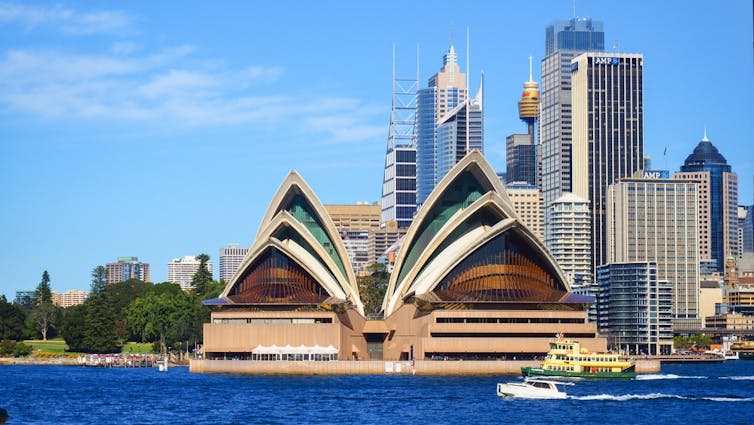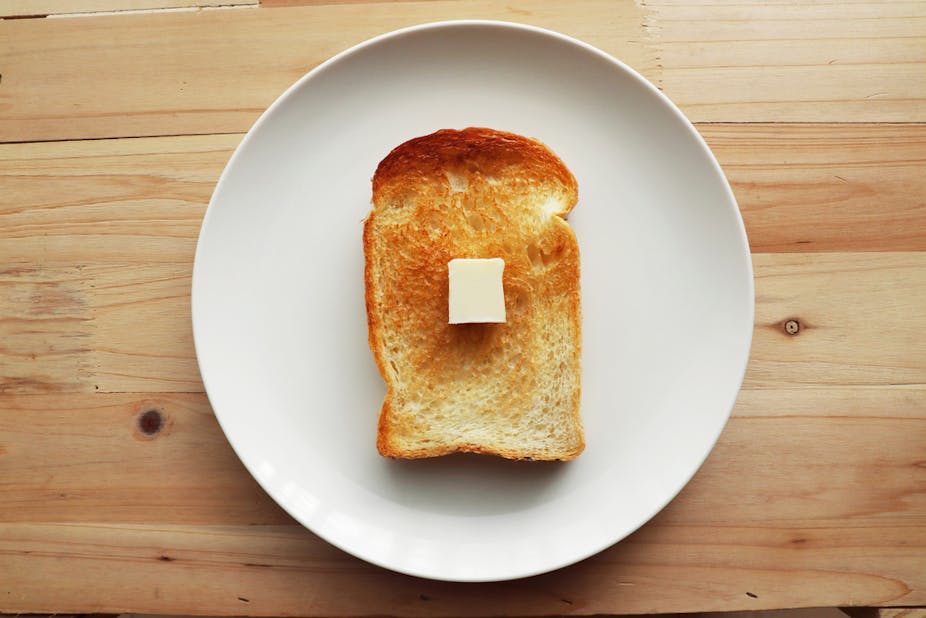Margarine has seen its fortunes ebb and flow with the tide of popular opinion. But Unilever’s recent announcement that it’s dropping the margarine brands Flora and Stork marks a new low point for the spread. It seems consumers are demanding the authentic article instead – even McDonalds has allegedly switched to butter.
Margarine (sometimes called “butterine”) was invented in 1869. It emerged in response to a prize offered by the French emperor Napoleon III to invent a convincing butter substitute to feed the growing population amid shortages of the real thing. It was a marvel of 19th-century food engineering.
The spread at one time epitomised what Rachel Laudan calls “culinary modernism”. Along with other processed and mass produced goods, margarine filled hungry stomachs with, relatively speaking, nutritious produce. And given its origins, margarine should be a symbol of democracy, innovation and progress.
But margarine has a shady reputation as can be seen from its etymological development. In addition to its usual definition as a noun, the Oxford English Dictionary charts how the word “margarine” came to be used as an adjective meaning “sham, bogus, counterfeit”. Though rationing during the World War II made margarine an everyday product in British households, regardless of class, it never managed to shake off its associations with “feelings of inferiority and poverty”. Margarine was, in the words of food historian Alysa Levene, “a vehicle for ‘class racism’.”
A spread of low repute
Poet Ezra Pound lamented the “margarine substitutes” that fed the public library hoards, while Bloomsbury group painter and critic Roger Fry used the put-down, “very good, pure, wholesome margarine” to describe the saccharine paintings of the enormously commercially successful Sir Lawrence Alma-Tadema (who was incidentally denounced by John Ruskin as the “worst painter of the 19th century”). The cultural and intellectual “elite” of interwar Britain used margarine to articulate the general feeling of contempt that they had for the “vulgar” taste of the masses.
Margarine’s low repute is reflected by a startling number of prominent literary figures and works. And charting margarine’s (or butterine as it was still often called) literary appearances reveals much about class snobbery and elitism.
One example from margarine’s formative years can be found in “the queen of bestsellers” Marie Corelli’s novel Ardath: The Story of a Dead Self (1890). Here, respect is apparently due to those who “know the difference between real butter and butterine”. Likewise in H. Rider Haggard’s 1884 debut adventure novel, Dawn,, a husband snubbed is compared to “butterine, inferior butter, you know, the counterfeit article”.

In his 1923 novel Kangaroo, DH Lawrence uses margarine to highlight the second-rate, in this case the antipodean capital, Sydney:
This London of the southern hemisphere was all, as it were, made in five minutes, a substitute for the real thing – as margarine is a substitute for butter.
George Orwell, in Down and Out in Paris and London (1933), refers to the emasculating effect of margarine consumption. He writes that a man who consumes only bread and margarine is “not a man any longer, only a belly with a few accessory organs”. Orwell speaks of the “dirty in the grain look” which physically mars the consumer of the spread.
Later, in Orwell’s Coming up for Air (1939) troubled times are signified by margarine’s appearance, “a thing which in the old days [would] never have [been] allowed into the house”. Margarine is referred to similarly in James Joyce’s modernist masterpiece Ulysses (1922):
Potatoes and marge, marge and potatoes. It’s after they feel it. Proof of the pudding. Undermines the constitution.
Second rate
In a column penned by Evelyn Waugh for The Spectator in 1929, margarine represents a general post-war lack of good taste. During the war, writes Waugh, “[e]verything was a ‘substitute’ for something else”, the upshot being “a generation of whom nine hundred and fifty in every thousand are totally lacking in any sense of qualitative value” as a consequence of “being nurtured on margarine and ‘honey sugar’.” Such a diet, according to Waugh, makes them “turn instinctively to the second rate in art and life”.
Tellingly, margarine features as a central plot device in two detective stories centring on themes of class, detection, and fakery: Arthur Morrison’s The Stolen Blenkinsop (1908) and Dorothy L Sayers’ Murder Must Advertise (1933).
In the latter, Lord Peter Wimsey, disguised as a copywriter at an advertising agency, finds himself producing copy for a brand of margarine. Margarine is in need of advertisement because it is seen as a second-rate product, which the general public needs convincing to buy. Butter, on the other hand, sells itself:
You don’t need an argument for buying butter. It’s a natural, human instinct.
Margarine functions as an extended metaphor for the tawdry world of fakes and counterfeits. At the same time that Sayers’ novel pokes fun at the consumer products of modernity, it dishes out scorn at the snootiness which ranks butter eaters as superior to those who choose margarine.
Margarine stands for the novel and the innovative. It stands for technology and progress. But margarine also embodies anxieties about the prevalence of mass culture and the fear surrounding the dissolution of boundaries between the high and the low, the real and the fake. Margarine is so threatening a symbol as it represents the potential contamination of society with what the early 20th-century elites might have seen as infectious mediocrity.

